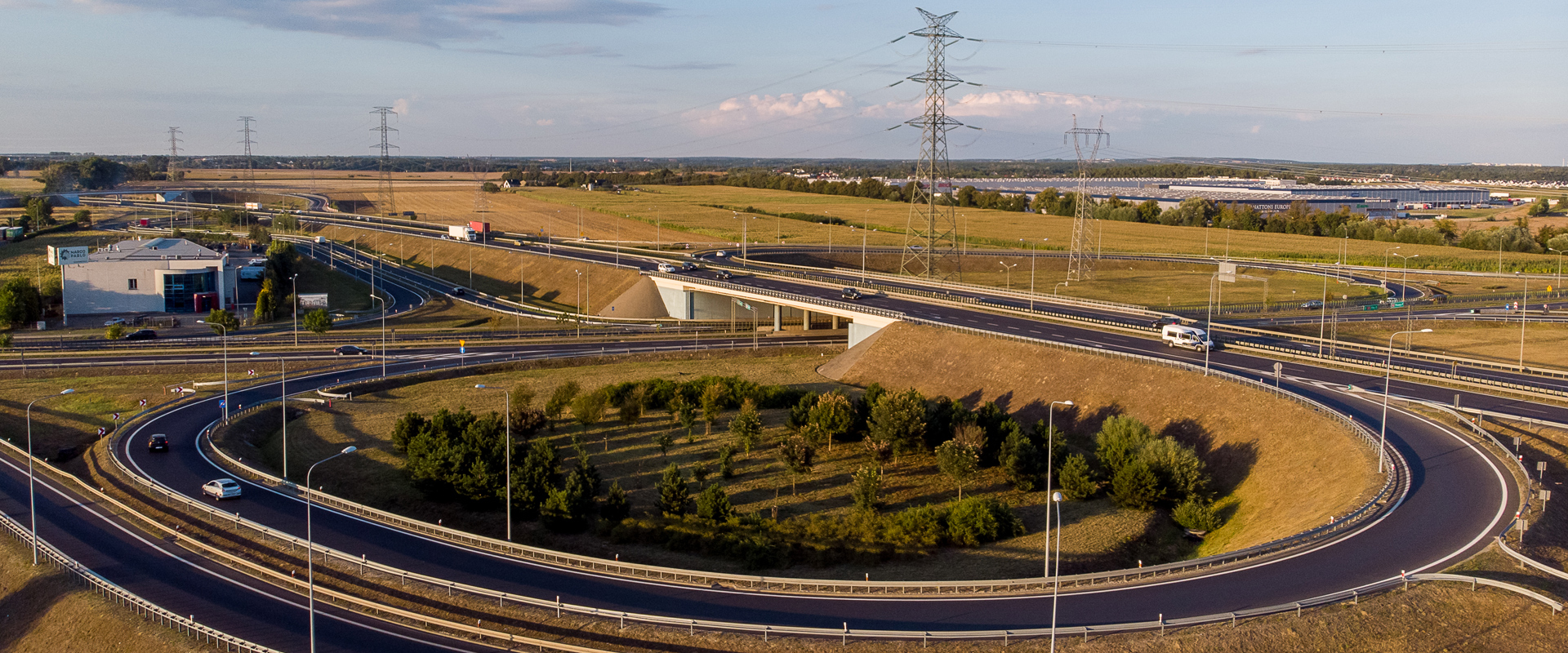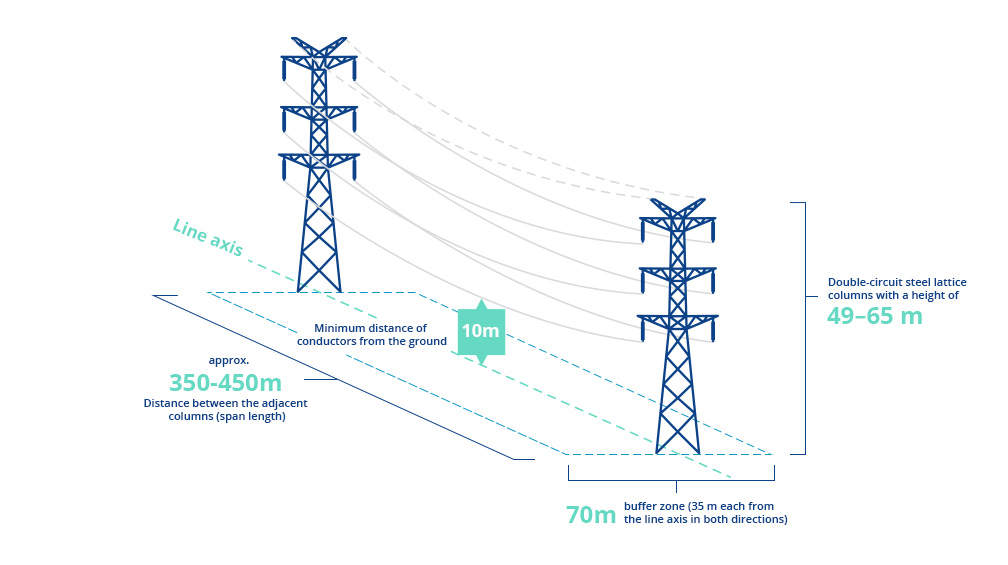Impact on society
and employees
and employees
The quality of life of Poles depends on our actions and ensuring the continuity of electricity supplies.
PSE’s particular concern is to ensure the safety of employees and personnel of contractors providing services to our company. Therefore, we constantly care about the development and safety of our technical infrastructure.
We are a modern organization, shaping an innovative work environment. We care about the development of competences of our employees. We want to continually strengthen the unique knowledge base within the organization and the expertise of PSE's staff responsible for maintaining a safe and stable power system.
We are committed to strengthening awareness and educating the public about how the electricity market works.
PSE’s particular concern is to ensure the safety of employees and personnel of contractors providing services to our company. Therefore, we constantly care about the development and safety of our technical infrastructure.
We are a modern organization, shaping an innovative work environment. We care about the development of competences of our employees. We want to continually strengthen the unique knowledge base within the organization and the expertise of PSE's staff responsible for maintaining a safe and stable power system.
We are committed to strengthening awareness and educating the public about how the electricity market works.
Impact on society and employees
Good practices and standards of living in the vicinity of lines
The use of transmission facilities requires the exercise of elementary caution and common sense. The equipment included in power lines are designed to minimize the risk of negative effects on persons in the vicinity of lines. The location of lines is planned so that the transmission facilities do not pose a threat to surrounding human habitats, and so that they blend into the landscape to the greatest extent possible.
In order to eliminate possible risks, our qualified employees take periodic preventive measures in the form of line surveys and inspection of their condition. If an intervention is necessary, they take actions to eliminate situations that threaten property and people in the vicinity of the lines. These activities are intensified in situations of increased risk or crisis, such as floods or hurricanes.
It is also important to cooperate with the owners of properties adjacent to power lines. These are often the people living in the vicinity of the lines who are the best source of information regarding the phenomena occurring. Their goodwill and willingness to help can very much support the process of eliminating the potential risks, or shorten the recovery process.
It is also important to cooperate with the owners of properties adjacent to power lines. These are often the people living in the vicinity of the lines who are the best source of information regarding the phenomena occurring. Their goodwill and willingness to help can very much support the process of eliminating the potential risks, or shorten the recovery process.
In order to eliminate possible risks, our qualified employees take periodic preventive measures in the form of line surveys and inspection of their condition. If an intervention is necessary, they take actions to eliminate situations that threaten property and people in the vicinity of the lines. These activities are intensified in situations of increased risk or crisis, such as floods or hurricanes.
It is also important to cooperate with the owners of properties adjacent to power lines. These are often the people living in the vicinity of the lines who are the best source of information regarding the phenomena occurring. Their goodwill and willingness to help can very much support the process of eliminating the potential risks, or shorten the recovery process.
It is also important to cooperate with the owners of properties adjacent to power lines. These are often the people living in the vicinity of the lines who are the best source of information regarding the phenomena occurring. Their goodwill and willingness to help can very much support the process of eliminating the potential risks, or shorten the recovery process.

How to organize your life next to a line?
In order to live an undisturbed life in the vicinity of a line, it is enough to use common sense and observe elementary rules of caution, especially in the area of the buffer zone, i.e. directly under the power line and on its both sides.
In the buffer zone it is allowed to carry out works related to construction, alteration, modernization and use, but in view of the safety of the line's operation and the immediate surroundings, the freedom of land development is limited. Depending on the type of line, the width of the buffer zone ranges from 50 to 80 m.
For the sake of safety, you should also refrain from any activity that could jeopardize the smooth operation of the line or cause potential danger to the persons around it.
It is forbidden to interfere with the line in any way and to carry out activities that may lead to damage or electrocution, such as climbing on poles or carrying out field work using machinery that is high or has long booms.
PSE conducts periodic surveys of lines and assessments of their technical condition. If we record circumstances that may affect the continuity of electricity supply or pose a threat to property or people around a line, we immediately take remedial measures. All work – repairs, renovations, clearing of trees exceeding height standards, etc. – is done by qualified teams of professionals from our organization and at the PSE's expense.
In the buffer zone it is allowed to carry out works related to construction, alteration, modernization and use, but in view of the safety of the line's operation and the immediate surroundings, the freedom of land development is limited. Depending on the type of line, the width of the buffer zone ranges from 50 to 80 m.
For the sake of safety, you should also refrain from any activity that could jeopardize the smooth operation of the line or cause potential danger to the persons around it.
It is forbidden to interfere with the line in any way and to carry out activities that may lead to damage or electrocution, such as climbing on poles or carrying out field work using machinery that is high or has long booms.
PSE conducts periodic surveys of lines and assessments of their technical condition. If we record circumstances that may affect the continuity of electricity supply or pose a threat to property or people around a line, we immediately take remedial measures. All work – repairs, renovations, clearing of trees exceeding height standards, etc. – is done by qualified teams of professionals from our organization and at the PSE's expense.
The width of the buffer zone primarily depends on the rated voltage of the line and the type (series) of poles used. The boundaries of the buffer zone for lines of a specific voltage are determined based on requirements included in regulations on permissible values of electric and magnetic field intensity, and noise level.
The maximum average width of the buffer zone for different types of extra high voltage lines operated in the country is 40 m and 35 m from the axis for 400 kV lines, depending on the line design, and 25 m from the line axis for 220 kV lines, in both directions..

Figure 1: The buffer zone for 400 kV lines: (source).
Rules of conduct when living in the vicinity of power lines
- Unauthorized climbing poles and touching of transmission equipment, especially power lines, is forbidden.
- It is prohibited to erect new residential buildings or new civil structures with rooms to be regularly occupied by people, directly under the line or in its buffer zone (the area directly under the line and on its both sides).
- Owners of properties that are farmlands may freely cultivate crops on their land and work using heavy farming equipment (combines, tractors, seeders, and other mechanical farming machinery). Caution is required at the same time – especially in situations where the machinery or equipment used has long booms or is tall by design.
- There are no restrictions on grazing cattle or other livestock under or right next to the overhead lines, nor are there any impediments to the creation of fish ponds. According to review papers and data published by the World Health Organization (WHO), electromagnetic fields in the vicinity of extra high voltage power lines are not harmful to livestock.
- Plantings that would come dangerously close to power lines are not permitted due to the potential risk of tree branches touching the power lines. PSE conducts continuous monitoring of company-owned equipment. In case of excessive growth of trees or shrubs near lines, appropriate cutting works are carried out. This work is conducted by and at the expense of PSE, and the wood obtained during the cutting works is transferred to the property owners. Our company currently performs tree cutting according to a five-year standard, for which the contractor provides a four-year guarantee. The distance of the conductors from the tree crowns is, therefore, determined based on the current crown dimensions, taking into account the five-year growth appropriate to the tree species and the site. In the event of above-normal growth during the guarantee period, additional work is performed immediately at the contractor's expense. Cutting work is only required under strictly defined circumstances. In situations where ornamental or orchard trees are planted, that do not reach significant heights, this work is not necessary.
There is no potential for adverse environmental impacts outside the designated buffer zone area. For residential development areas, there are additional stringent requirements that PSE is obligated to follow.
